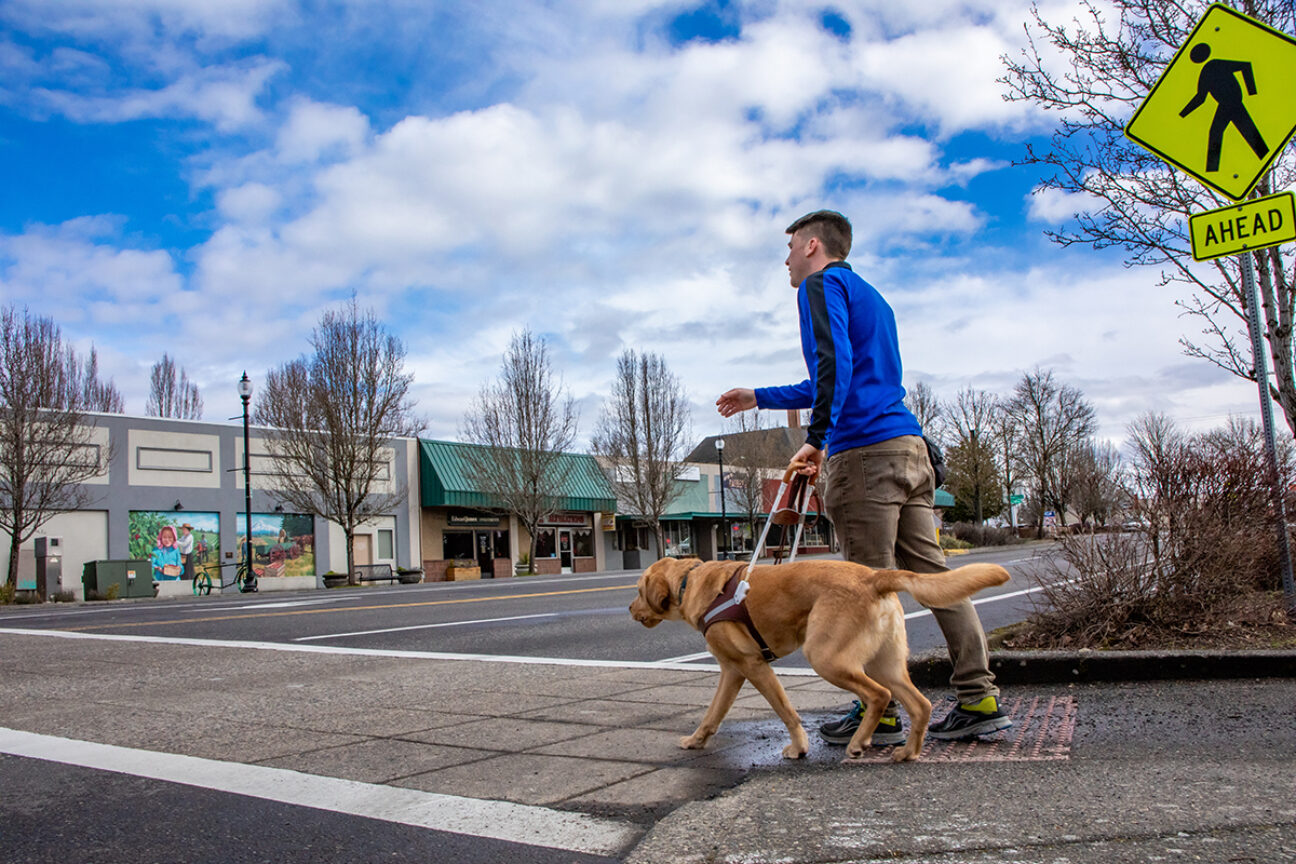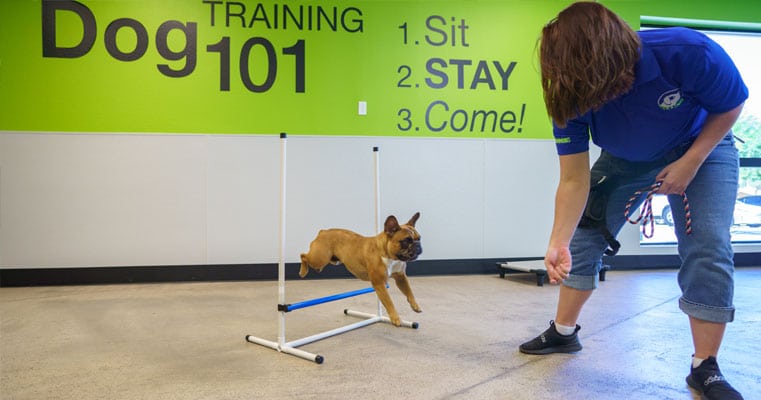Beginner's Overview to Successful Pet Dog Training in your home
Effectively educating a canine at home calls for a nuanced understanding of canine behavior and reliable interaction methods. Developing clear training objectives, making use of top notch rewards, and keeping uniformity across relative are crucial components. Moreover, incorporating training into everyday routines can boost both interaction and retention. Many amateur fitness instructors encounter obstacles that might hinder development. To navigate these complexities efficiently, it's important to discover a number of key facets that can transform your method and result in an unified partnership with your pet dog. What basic principles should every novice grasp to guarantee success?
Comprehending Pet Habits
Recognizing canine habits is essential for reliable training and cultivating a harmonious partnership between human beings and their canine companions. Canines communicate primarily with body movement, articulations, and faces, making it vital for proprietors to interpret these signals precisely. Acknowledging actions such as tail wagging, growling, or trembling can give insights into a pet's mood and objectives.

Typical behavioral problems, such as aggression, anxiousness, or too much barking, typically come from misunderstandings or unmet demands. Observing and dealing with these issues promptly can prevent escalation and ensure a favorable training experience. By fostering a deep understanding of canine actions, owners can customize their training methods to fit their canine buddies, inevitably bring about a well-behaved and contented animal.
Crucial Training Tools
A well-appointed training space can dramatically enhance the efficiency of pet dog training in the house. Vital training devices make sure that both the dog and the fitness instructor can engage in efficient sessions that cultivate learning and bonding.

Purchasing a tough chain and a comfortable, well-fitting collar or harness is important for security and control. These tools aid establish boundaries and make sure the pet dog stays safe throughout training. Additionally, a marked training location, devoid of diversions, help concentration for both the pet dog and the fitness instructor.
Training help such as training pads, cones, or dexterity equipment can also boost the experience by presenting range and obstacles. Lastly, having a notebook or electronic application for tracking development can be vital, enabling you to keep in mind successes and areas for enhancement. Utilizing these essential tools will certainly create a positive training environment and lay the foundation for effective discovering.
Creating a Training Regimen
Establishing a constant training regimen is crucial for efficient pet training at home. A well-structured routine not just helps in enhancing desired actions however additionally provides your pet with a sense of safety and security and predictability. To create an efficient training routine, start by determining certain training objectives, such as fundamental commands, leash walking, or housebreaking.
Select a marked time each day for training sessions, preferably when your pet is sharp and receptive. Sessions should be short, about 5 to 15 mins, to keep focus and avoid tiredness. Consistency in timing and environment will certainly enhance your pet's learning experience.
Integrate training right into everyday activities to reinforce abilities. Practice commands throughout walks or nourishment, which incorporates finding out right into natural regimens. Additionally, stay versatile and adjust the regular as required, suiting your pet dog's energy levels and mood.
Favorable Reinforcement Techniques
Favorable support techniques are fundamental to efficient pet training, advertising preferred actions with rewards as opposed to penalty. This technique utilizes favorable stimuli, such as deals with, appreciation, or playtime, to encourage dogs to repeat details actions. The cornerstone of this method is timing; incentives need to be given quickly complying with the preferred behavior to produce a clear organization.
When applying favorable reinforcement, it is vital to choose incentives that are encouraging for your pet. High-value deals with, such as little items of chicken or cheese, can be especially reliable throughout training sessions. In addition, varying the benefits can maintain your pet dog's passion and enthusiasm.
Beginning with easy commands, like "sit" or "remain," and gradually progress to more intricate tasks. Uniformity is essential; ensure that all member of the family make use of the exact same commands and reward systems to avoid confusion.
Moreover, it is vital to continue review to be individual and stay clear of irritation. Canines, like people, learn at their own speed. try this By promoting a supportive training atmosphere with favorable reinforcement, you can improve your dog's learning experience while strengthening the bond between you and your fuzzy friend, laying the foundation for successful training results.
Typical Training Difficulties
While educating a pet dog at home can be a gratifying experience, it commonly features a collection of typical obstacles that can check both perseverance and uniformity. One widespread concern is interruption. Pets might end up being quickly averted by noises, activities, or even aromas in their setting, making it challenging to preserve their emphasis during training sessions.
Another challenge is disparity in commands and reinforcement. It can impede and confuse the dog progression if household participants utilize different hints or rewards. Establishing a unified approach is vital for effective communication.
Furthermore, pets can experience irritation or stress, specifically if they do not recognize what is anticipated of them. This can lead to undesirable habits, such as barking or eating.
Ultimately, the timing of reinforcement is crucial (Dog training). Postponed rewards can diminish the effectiveness of positive reinforcement, as canines may fail to link the habits with the reward
Getting rid of here these obstacles calls for dedication, clear interaction, and an organized training strategy. Identifying and resolving these usual barriers will lead the way for an extra enjoyable and effective training experience in the house.
Verdict
In verdict, effective pet training at home necessitates an extensive understanding of canine behavior and efficient interaction techniques. By establishing clear training objectives and making use of high-quality deals with together with favorable reinforcement, the training process comes to be more rewarding for both the dog and the fitness instructor.
Developing a consistent training routine is important for effective pet training at home.Favorable support methods are essential to reliable dog training, promoting preferred behaviors via rewards instead than penalty (Dog training). By cultivating a supportive training atmosphere via positive support, you can enhance your canine's learning experience while reinforcing the bond in between you and your fuzzy buddy, laying the groundwork for successful training results
In conclusion, effective pet dog training at home necessitates an extensive understanding of canine behavior and effective communication strategies. By developing clear training objectives and making use of high-quality deals with together with positive support, the training procedure comes to be much more satisfying for both the fitness instructor and the pet dog.
Comments on “The Role of Socialization in Dog Training for Better Behavior”